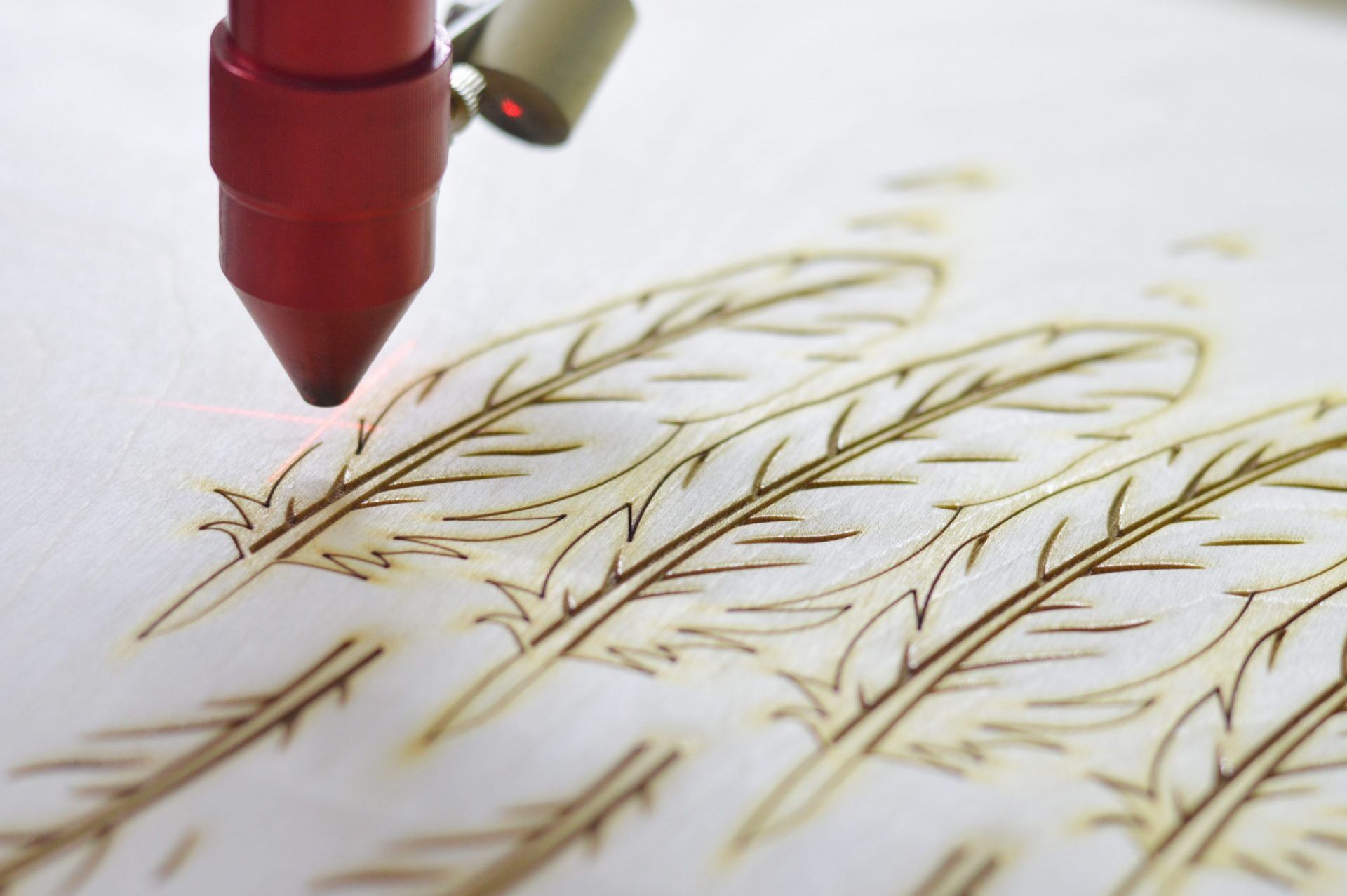In the world of manufacturing, advanced technologies such as CO2 laser cutting and engraving, fiber laser marking, CNC milling, and fiber laser metal cutting are transforming the way products are created in various industries. Below, we will explore different applications and success stories that demonstrate the power and versatility of these technologies in real life.
- CO2 laser cutting and engraving: CO2 laser cutting and engraving is widely used in the design and customization industry. A notable success story is laser engraving on wooden products, such as furniture and decorative items. CO2 lasers enable exceptional precision when carving intricate designs into wooden surfaces, creating unique, personalized products. In addition, this technology is also applied in the textile industry to cut and engrave designs on garments and fabrics, providing high-quality results and increasing the aesthetic value of the final products.
- Marking with fiber lasers: Marking with fiber lasers is used in a wide range of industries, including automotive, electronics and medical. A notable case is its application in the automotive industry to mark serial numbers, barcodes and logos on metal parts. This type of marking is durable, wear-resistant and provides traceability in the supply chain, which is crucial in the identification of parts and components.
- CNC Milling: Computer-controlled CNC milling enables the manufacturing of parts and components with high precision and repeatability. A successful case of CNC milling is the production of molds and dies in the plastics and foundry industry. This technology allows complex and detailed shapes to be created with greater efficiency and shorter production time compared to traditional methods. In addition, CNC milling is also used in the manufacturing of prototypes and custom parts in sectors such as aerospace and mechanical engineering.
- Metal cutting with fiber lasers: Metal cutting with fiber lasers has revolutionized the metal industry by offering high precision and speed in the cutting process. A notable example is its use in the manufacture of parts for the electronics industry, such as chassis and precision components. This technology allows for clean, precise cuts in metals such as stainless steel, aluminum and copper, ensuring high quality and perfect fit of parts in assemblies.
Conclusion: CO2 laser cutting and engraving, fiber laser marking, CNC milling and fiber laser metal cutting technologies have proven themselves in a wide range of applications and success stories in different industries. These technologies have improved precision, efficiency and versatility in manufacturing high-quality, customized products.
From laser engraving on wood and textiles to durable marking on metal parts, cutting complex shapes in molds and dies, and precise cutting of metals, these technologies are driving innovation and production in various industries.
Key benefits of these technologies include:
- Precision and quality: Advanced manufacturing technologies allow for high-precision cutting, engraving and marking, ensuring quality and consistency in final products.
- Customization: The ability to personalize products and add intricate designs through laser engraving and marking provides additional value for customers, driving differentiation and user satisfaction.
- Efficiency and productivity: These technologies offer greater speed and efficiency compared to traditional manufacturing methods, reducing production times and increasing overall productivity.
- Versatility: CO2 laser cutting and engraving, fiber laser marking, CNC milling, and fiber laser metal cutting technologies can be applied to a wide range of materials, from wood and plastic to metals such as steel, aluminum, and copper.
In summary, CO2 laser cutting and engraving, marking with fiber lasers, CNC milling and metal cutting with fiber lasers have proven effective in numerous industrial applications. These technologies have enabled the manufacturing of personalized, precise and high-quality products, and have boosted efficiency and productivity in different sectors. With the continued advancement of technology, it is expected that these applications and success stories will continue to expand and bring benefits to modern manufacturing.
